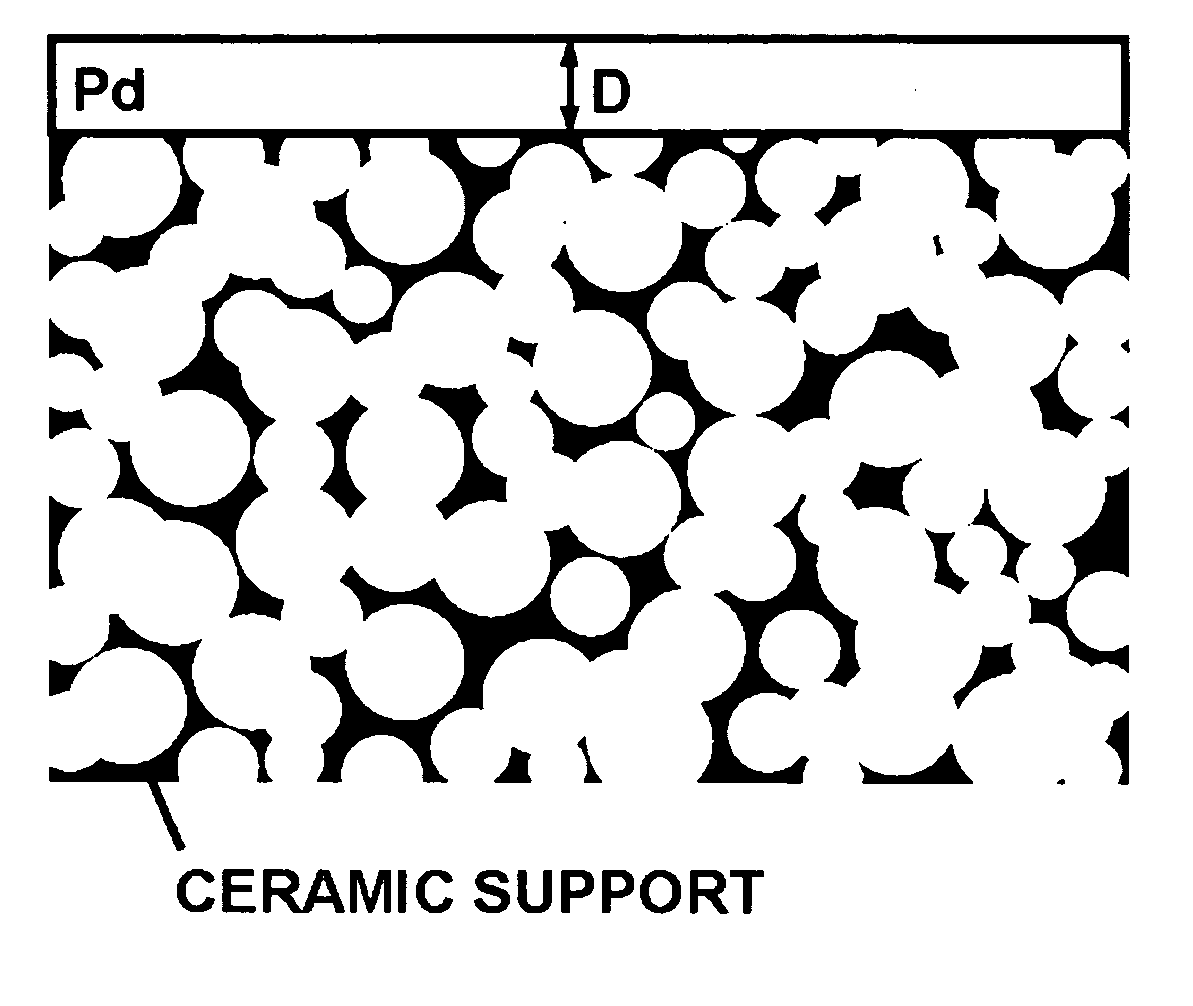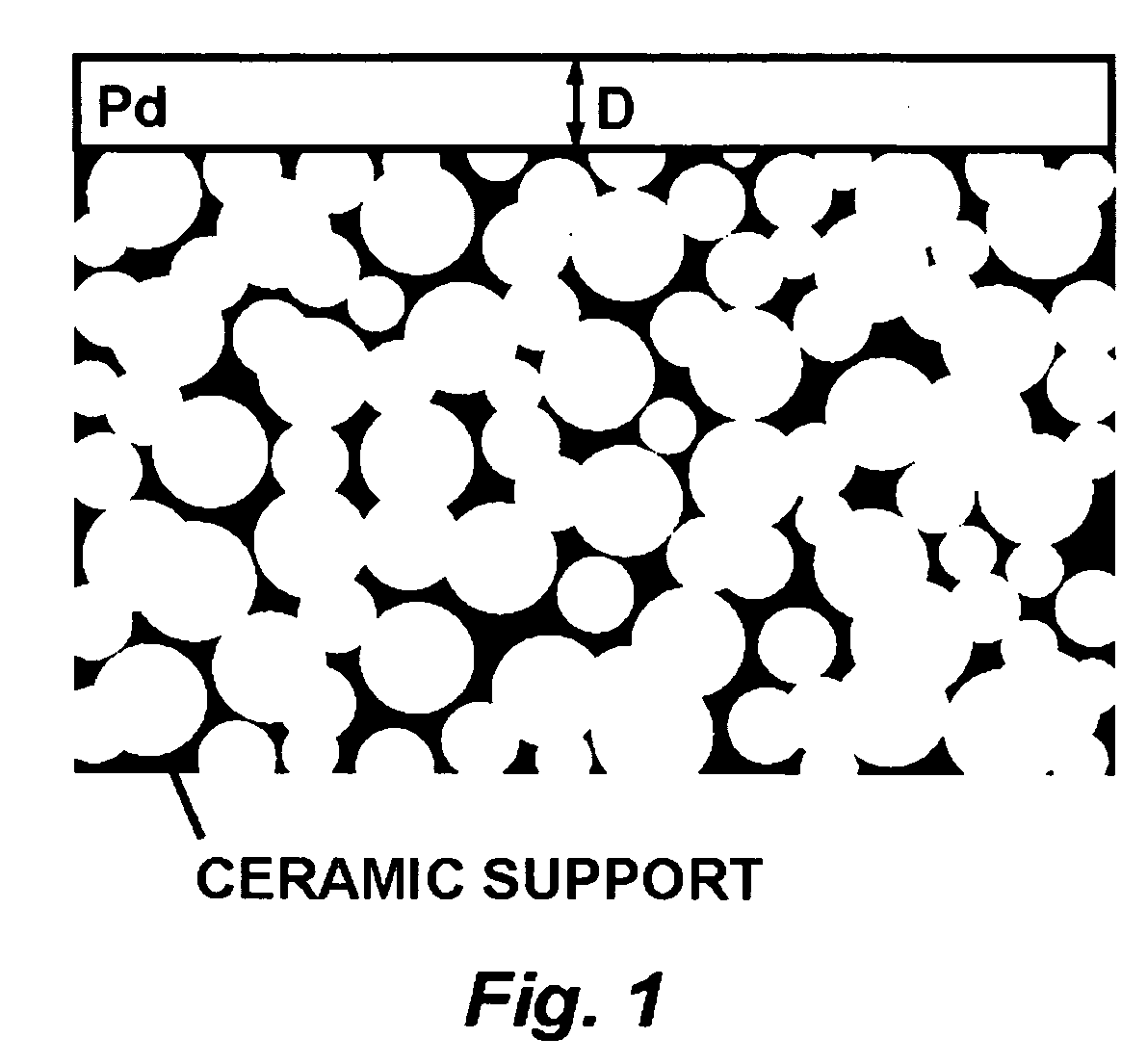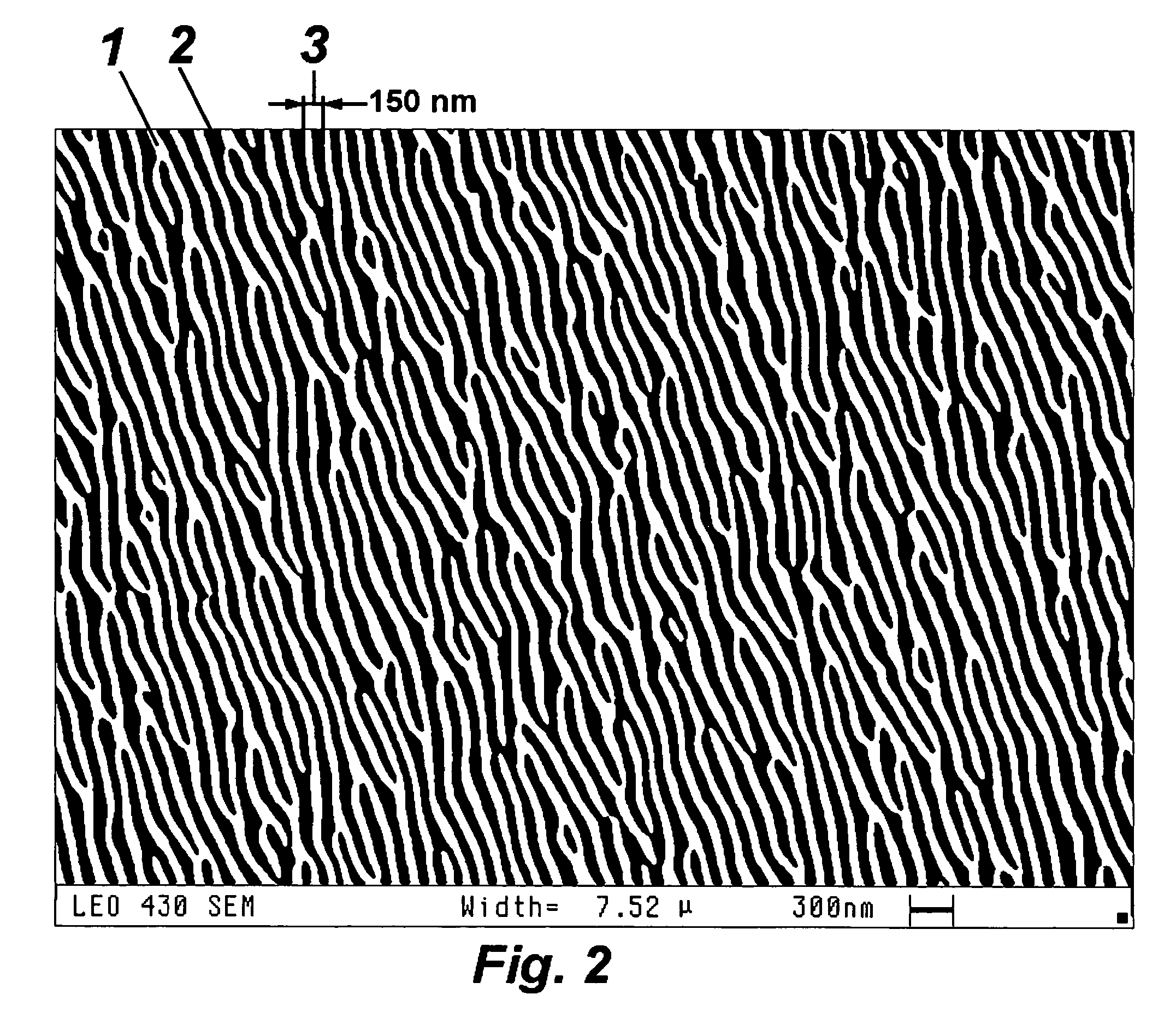Composite material for ultra thin membranes
a technology of composite materials and ultra thin membranes, applied in physical/chemical process catalysts, metal/metal-oxide/metal-hydroxide catalysts, separation processes, etc., can solve the problem of limiting the minimum membrane thickness, difficult to completely exclude large outliers in pore distribution, mechanical breakdown
- Summary
- Abstract
- Description
- Claims
- Application Information
AI Technical Summary
Benefits of technology
Problems solved by technology
Method used
Image
Examples
Embodiment Construction
[0014] A preferred embodiment provides key components for fabricating high performance, reliable, ultra thin membranes. It also features novel ultra thin membrane designs and devices incorporating ultra thin membranes.
[0015] Ultra thin membranes can be used to separate a specific component from a mixture of components or to catalyze a chemical reaction. Typically the membrane is placed as an interface between two regions with a pressure or concentration gradient applied across the membrane causing only certain components from one region to be transported into the other region. The separation is done by the active part of the membrane. The productivity of the membrane is approximately directly proportional to the pressure (concentration) gradient across the membrane and the surface area of the active component and inversely proportional to the thickness of the membrane.
[0016] One embodiment provides a composite structure wherein one material provides a skeleton with strong mechanic...
PUM
| Property | Measurement | Unit |
|---|---|---|
| Thickness | aaaaa | aaaaa |
| Size | aaaaa | aaaaa |
| Size | aaaaa | aaaaa |
Abstract
Description
Claims
Application Information
 Login to View More
Login to View More - R&D
- Intellectual Property
- Life Sciences
- Materials
- Tech Scout
- Unparalleled Data Quality
- Higher Quality Content
- 60% Fewer Hallucinations
Browse by: Latest US Patents, China's latest patents, Technical Efficacy Thesaurus, Application Domain, Technology Topic, Popular Technical Reports.
© 2025 PatSnap. All rights reserved.Legal|Privacy policy|Modern Slavery Act Transparency Statement|Sitemap|About US| Contact US: help@patsnap.com



